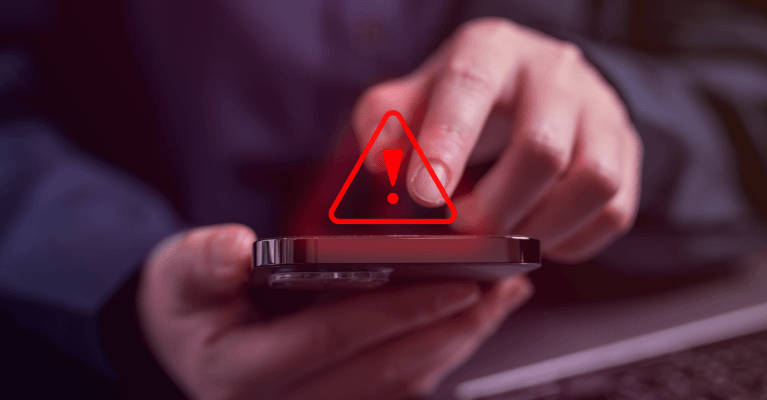Fraud continues to rise across the country, including a 14% increase in reported losses in 2023, with consumers losing more than $10 billion, according to the Federal Trade Commission (FTC).
Imposter scams topped the list of most commonly reported fraudulent tactics. Consumers reported losing $1.8 billion to fraudulent bank transfers or payments as well as $343.7 million to wire transfer fraud.
It is vital to take precautions with so much money on the line and fraudsters continuing to get more sophisticated in their tactics. Here are tips to help protect yourself from bank account takeover fraud.
How it Works
In one of the most common tactics for bank account takeover, fraudsters send mass text messages or call consumers pretending to be from their bank to verify a recent “transaction.” Some scammers are sophisticated enough to “spoof” your bank’s legitimate phone numbers (i.e., make it appear as if they are calling from your bank), so it is always important to proceed with caution if something seems suspicious.
Since the “transactions” you’re being notified of are false, many consumers are quick to respond “NO” when asked if the purchase was legitimate. Once you respond “NO,” the fraudster will call you immediately claiming to be from your bank. The fraudster may have some information about you – possibly your date of birth, your address, even your username for online banking – but they will often request that you provide more information. Next, they will claim to have sent a code to your mobile phone and ask you to provide it to them: STOP, DO NOT provide your information or code to anyone. Banks will NEVER ask you to provide the texted verification code to them over the phone.
If a fraudster is able to get your one-time access code, they will be able to access and transact on your accounts. They may even encourage you not to check your accounts online while they “resolve the issues.” What they’re really doing, however, is trying to transfer as much money out of your accounts before you notice.
Ways to Protect Yourself
- Know How Your Bank Communicates with You: Make sure you’re aware of the ways your bank will communicate with you via text messages, account alerts, emails and other channels. If a message seems suspicious, do not respond or click any links. Instead, contact your bank directly using the phone number on their official website or the back of your debit/credit cards.
- Don’t Overshare Information: Be cautious with how much information you share with anyone – especially if they contacted you unprompted claiming to be from your bank. Never share your account usernames or passwords, Social Security number or account access codes with anyone. Be cautious over-sharing personal information on social media as well, as this can be a treasure trove for scammers to gain information on their targets.
- Monitor Your Accounts Regularly: Online and mobile banking have made monitoring your accounts in real-time a breeze. Ensure you’re checking your accounts regularly for suspicious activity and notify your bank immediately if you notice a fraudulent purchase. Make sure you’re checking in over weekends and holidays as well, as many scammers are hoping to take advantage of busy or distracted victims.
- Be Wary of Suspicious Links: Phishing is another common tactic of fraudsters, so ensure you know what to look for and if a message or link seems suspicious, delete it without clicking any links, which could contain viruses and malware.
- Stay Calm: Pressure tactics are common among fraudsters, as they’re hoping to get you to act without thinking. If you’re being pressured or rushed into providing information, hang up immediately and contact your bank directly.
If You’ve Been a Victim
- Notify your bank immediately. Ask them to freeze your accounts, provide new account numbers and cards. Monitor your accounts closely as well.
- Contact the credit agencies (Equifax, Experian and TransUnion) to place a fraud alert on your credit report. Checking your report periodically for fraudulent activity is also a good idea.
- Update your usernames and passwords and ensure this is done regularly for added security.
- File a report with the police, the Federal Trade Commission (reportfraud.ftc.gov) and Federal Bureau of Investigation’s Internet Crime Complaint Center (IC3.gov).

Helping you boost your financial intelligence.
Read our financial resources from your friends at WSFS.




